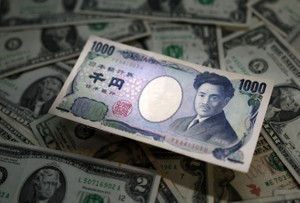Vox Populi, Vox Dei is a daily column that runs on Page 1 of The Asahi Shimbun.
January 4, 2024 at 11:56 JST
 A Japan Airlines plane bursts into flames after colliding with a Japan Coast Guard aircraft at Haneda Airport in Tokyo on Jan. 2. (Tatsuya Shimada)
A Japan Airlines plane bursts into flames after colliding with a Japan Coast Guard aircraft at Haneda Airport in Tokyo on Jan. 2. (Tatsuya Shimada)
The video footage of an airplane engulfed in flames at Tokyo’s Haneda Airport, where darkness had already fallen, was truly shocking.
A Japan Airlines passenger jet and a Japan Coast Guard plane collided on a runway Jan. 2, killing five coast guard personnel who were headed to Niigata Air Base to deliver relief supplies to survivors of the Jan. 1 Noto Peninsula earthquake.
These back-to-back disasters at the start of the new year left me feeling helpless.
In the airline industry, the so-called Critical 11 Minutes refer to the three minutes after takeoff and the eight minutes before landing when an aircraft is said to be most at risk of an accident.
A search of past records showed that many mishaps have occurred on runways. And every time one happened, air safety authorities would refer to the Tenerife Airport disaster.
In March 1977, two Boeing 747 passenger jets collided on the runway at an airport on the Spanish island of Tenerife in the Atlantic Ocean. With 583 fatalities, it was the deadliest accident in aviation history.
Subsequent investigations revealed a “chain reaction of adverse circumstances and errors,” attracting the attention of the entire world.
On the day of the disaster, a bomb had gone off at another airport on Tenerife, forcing flights to be diverted to the fateful airport and causing considerable congestion.
Visibility was poor due to dense fog. Communications between the control tower and the two jumbo jets became partially garbled because of noise, which resulted in misunderstandings over words such as “taxiing” and “takeoff.” And a flight engineer, who suspected a miscommunication between the tower and the captain, apparently did not confront his skipper out of deference.
None of these potential red flags was dealt with, allowing the chain reaction of errors to go unchecked.
After the disaster, air safety measures were reviewed from the standpoints of human and technical error.
Even then, however, a report published last month by the U.S-based Flight Safety Foundation stated, “Runway incursions are one of the most persistent threats to aviation safety.”
The cause of the Jan. 2 collision at Haneda Airport is still unknown. I can only hope that the authorities will spare no effort at unraveling the cause of the accident and come up with steps to ensure such a harrowing scene is never repeated.
--The Asahi Shimbun, Jan. 4
* * *
Vox Populi, Vox Dei is a popular daily column that takes up a wide range of topics, including culture, arts and social trends and developments. Written by veteran Asahi Shimbun writers, the column provides useful perspectives on and insights into contemporary Japan and its culture.




















Stories about memories of cherry blossoms solicited from readers
Cooking experts, chefs and others involved in the field of food introduce their special recipes intertwined with their paths in life.
A series based on diplomatic documents declassified by Japan’s Foreign Ministry
A series on the death of a Japanese woman that sparked a debate about criminal justice policy in the United States
A series about Japanese-Americans and their memories of World War II
Here is a collection of first-hand accounts by “hibakusha” atomic bomb survivors.